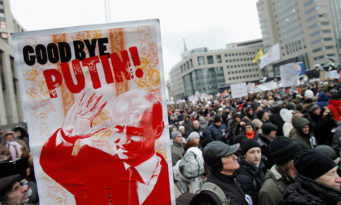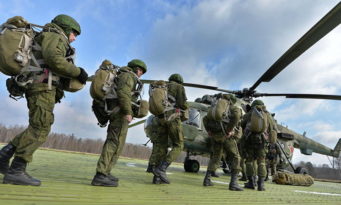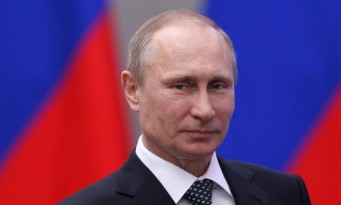Hybrid Warfare as a Strategy

- By defencematters
Over the past two years, NATO has been focused on hybrid warfare. The same issue will be at the top of the upcoming summit in Warsaw.
Octavian Manea
Over the past two years, NATO has been focused on hybrid warfare. The same issue will be at the top of the upcoming summit in Warsaw. But what does the Ukrainian case reveal about hybrid warfare? A discussion with Alexander Lanoszka, Postdoctoral Fellow at Dartmouth College.
Do you see hybrid warfare more of a strategy or an effective way to secure political ends?
Strategy must take into account the goals, capabilities, and anticipated behaviours of the adversary. This addition is important because I argue that we can best conceive of hybrid warfare as a strategy that brings together insurgent tactics and conventional military deterrence. Embedded in this conceptualisation is the idea that one goal behind the use of so-called hybrid war is to forestall an unfavourable response by the target and/or friends of the target.
Insurgent tactics are useful insofar as they give the belligerent plausible deniability – something the belligerent might desire if it fears that its activities could provoke international backlash. The belligerent can claim that insurgent activities have indigenous roots, thereby confounding international audiences who might otherwise contemplate supporting the target against the belligerent.
Yet having a powerful conventional military deterrent is also important because the very target knows that it cannot win in an escalation game with the belligerent. It keeps the conflict localized and under control of the belligerent.
A core dimension of hybrid warfare as we have seen it in Crimea is the insidious subversion that is used against the target. What are the elements that overlap with what we’ve seen in the past used in the practice of insurgencies?
The real question is whether something like the hybrid warfare we saw used against Crimea represents something unprecedented. A good portion of the literature on hybrid warfare seems to take extreme positions on hybrid warfare: that it is a very new phenomenon made possible due to advances in telecommunications technology; or, that it is a very old phenomenon that has existed for millennia.
If we are to use the concept of hybrid warfare, what is distinct about it, in my view, is that the belligerent manipulates or exploits local ethnic and nationalist grievances among members of some target state. Nationalism and ethnic identities are a more modern phenomenon. In this vein, hybrid warfare is a product of modernity. One historical example where we saw a belligerent try to pull a Crimea was in the 1930s. Nazi Germany supported and armed German co-ethnics in Czechoslovakia so that they could rise up and provoke the Czechoslovak government into some angry response. This response would have been the basis of some Nazi German intervention launched in order to save those ethnic populations from persecution.
In other words, we have seen the use of this kind of strategy in the past when the telecommunications technologies were much more primitive. I think it is wrong to look at such technologies as a core feature of hybrid warfare. It has more to do with irredentism and identity politics, with all the things that we usually associate with national grievances that could be seen as material to be exploited.
What role does the conventional power play in the hybrid performance?
I think it plays a very important role. Recall that I see hybrid warfare as a marriage of insurgent tactics and conventional military deterrence. Insurgent tactics are useful because the belligerent can claim that certain actions that happen within the target state’s borders are the result of indigenous forces acting on their own volition. Conventional military deterrence enters into the equation because the target might suspect the involvement of the belligerent, anyway. However, it does not want to escalate the situation further because it knows it would lose a direct military confrontation
Herein lies the paradox: insurgent tactics offer a means for the belligerent to avoid a direct military conflict with its target, yet conventional military deterrence works only when the target believes that the belligerent will use its military power. I argue that, more likely than not, the target will not take the risk that the belligerent is bluffing. Another possibility is that the belligerent is trying to confound international audiences so as to deter an external intervention on behalf of the target state.
What are the raw materials that could be exploited through a (Russian) hybrid warfare strategy?
Drawing from the Central Eastern European context we can inductively outline several conditions that would make a target state particularly vulnerable to a belligerent that wishes to practice hybrid warfare. An ideal target against which a belligerent might be tempted to pursue hybrid warfare would be one with the following characteristics: it is militarily inferior, it features ethnic groups that have grievances with the political center, and it has some sort of ethnic or linguistic ties with the belligerent in a way that gives it opportunities to insert itself in the population of the target.
These circumstances seldom obtain in international politics: China’s relationships with some states in Southeast Asia might have these characteristics. However, I would be very carefull not to overstate the vulnerability of NATO countries to hybrid warfare. I think we see these vulnerabilities most in the former Soviet Union where much ethnic heterogeneity exists, where local civil societies are weak, and where local militaries are weak relative to Russia’s.
In the last few years Russia has invested massively in access-denial capabilities. Russia can cut land access into the Baltics in the so-called Suwalki Gap. Is this added incentive for a revisionist power that has the intent, and now increasingly the capabilities and the ability, to wage low cost irregular warfare campaigns under an A2/AD umbrella, psychologically deterring a NATO response?
Exploiting the so-called Suwałki gap would be a very risky military move for Russia because it would automatically involve Poland. There is some doubt that the United States and other Western members would fight for the Baltics, even though as NATO members they also receive an Article 5 commitment. I think there is far less doubt about whether the violation of Polish territorial sovereignty would trigger a severe alliance response, partly because of Poland’s location as well as its contiguity with Germany. Russia likely knows this, and so I would imagine that any movement against the three Baltic countries would have to be restricted to those three. That is, Russia would be better off moving quickly into the Baltic countries and using their local military presence to gain a local advantage.
Still, I think NATO does face a very severe anti-access and anti-area threat even if Russia does not exploit the Suwałki gap. Russia could perhaps transport by air about 60,000 troops within several days. Its snap exercises are evidence that Russia might deploy its forces rapidly and without warning. If true, then Russia could succeed in keeping NATO forces out of the Baltic theater of operations. This is not psychological warfare as it is a very practical military consideration on how NATO can defend those countries when it only has limited rotational forces, pre-positioned military hardware, and small air deployments.
How do you find the option of Eastern most exposed allies investing in sub-conventional deterrence and preparing for protracted warfare? In this sense by developing a deterrence-by-denial posture, NATO Eastern allies can exploit the impatience of Russia by massively raising the costs beyond what they expected.
I think that is correct. If we are to make deterrence of Russia a central military goal with regards to NATO’s Eastern flank, then the alliance and its members must contemplate likely scenarios for how Russia might behave aggressively towards them. Unfortunately, this requires thinking not only about conventional war and subconventional war, but also about the unthinkable: limited nuclear war. I believe NATO already grasps this issue and so it is already starting to adapt. Still, in some circles the focus has predominately been on particular military solutions that envision a more traditional crisis. They include shifting some of NATO’s military assets from Western Europe – where they are heavily concentrated, as you know – to Eastern Europe. These proposals have much to recommend them, but to go back to what I said earlier, strategy must take into account how the adversary would respond.
If are going to focus disproportionately on implementing these sorts of measures related to deterring conflict at high levels of violence, then we risk doing so at the expense of deterrence at lower levels of violence. Deterrence needs to be comprehensive. This observation brings to mind the stability-instability paradigm. The adversary may be so confident that because you are not willing to escalate to a higher level of violence it might confident that it can subvert or provoke you at lower levels. Unfortunately, the Baltic countries have a long way to go to develop deterrence-by-denial capabilities on their own. Their militaries are so inferior to Russia’s that the more pressing problem facing NATO concerns how to reinforce them should Russia ever attack.
I would add that we should not overstate the vulnerability of NATO countries to hybrid warfare, at least when we consider how I define hybrid warfare.
Though not a NATO ally, Moldova could be at an especially strong risk of being victim to a strategy of hybrid warfare if Russia is so inclined. Many Russian co-ethnics live in its east near Transnistria. Its government has been mired in scandal. However, it remains clear whether Russia has the willingness to pursue such actions when it still needs to consolidate, and pay for, its gains in parts of Ukraine like Crimea.
Alexander Lanoszka is a Postdoctoral Fellow at the Dickey Center for International Understanding at Dartmouth College. He has published “Russian Hybrid Warfare and Extended Deterrence in Central-Eastern Europe” in the January 2016 issue ofInternational Affairs, the Chatham House journal:
The whole interview is published in Small Wars Journal

















